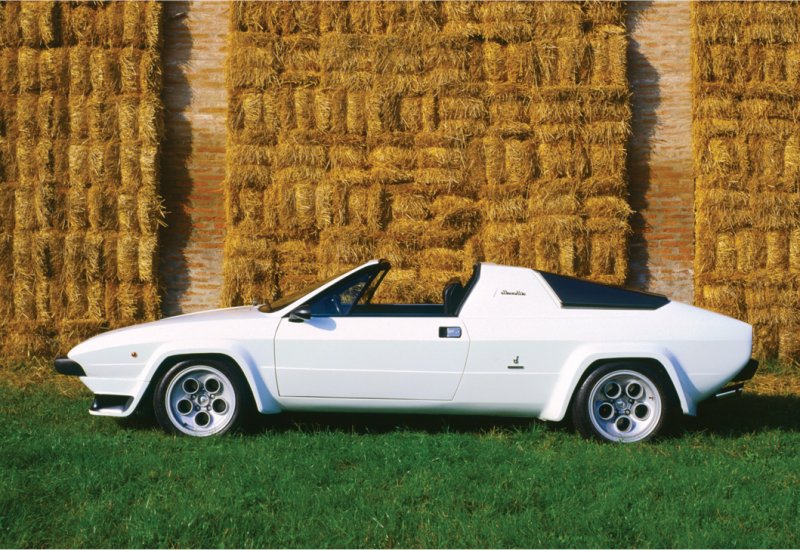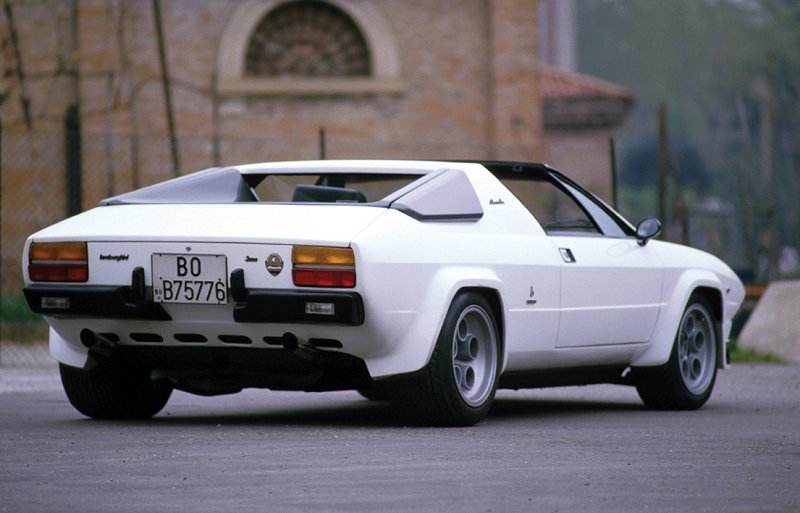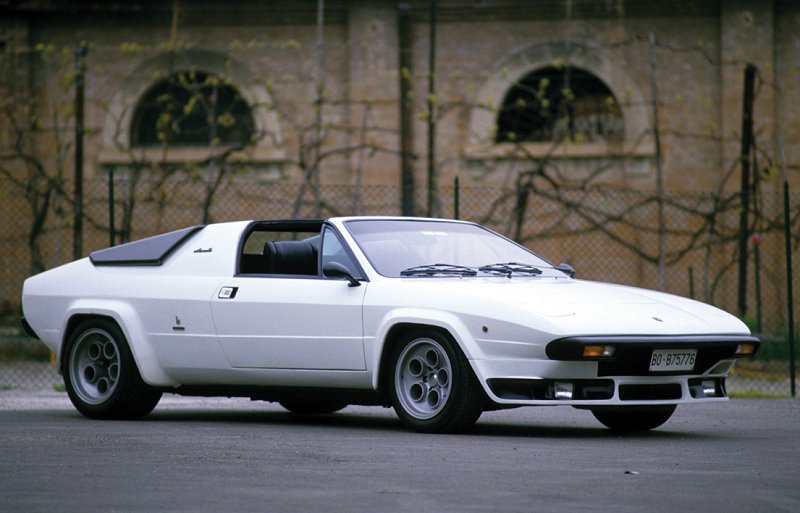Description
The Lamborghini Silhouette, introduced in 1976, was one of the rarest and most distinctive models in Lamborghini’s history—a car that bridged the gap between the Urraco and the later Jalpa, while introducing new styling and engineering ideas that reflected the evolving spirit of the late 1970s. It was Lamborghini’s first open-top production car, a bold step that transformed the compact V8 platform into a sharper, more aggressive and driver-focused machine. Though produced in small numbers, the Silhouette embodied a crucial stage in Lamborghini’s evolution, blending the raw appeal of a sports car with the exotic drama that had become the company’s hallmark.
The Silhouette’s origins lay in the development of the Urraco P 300, whose improved 3.0-litre V8 and refined chassis provided a solid foundation for further experimentation. As Lamborghini searched for new ways to attract customers in a difficult economic climate, the idea emerged to create a more striking and exclusive version of the Urraco—one that would stand apart visually and emotionally. The task once again fell to Marcello Gandini at Carrozzeria Bertone, whose design for the Silhouette marked a decisive shift from the curving forms of the early 1970s toward the angular modernism that would define Lamborghini’s future.
Gandini’s design transformed the Urraco’s silhouette—appropriately giving the car its name—into a sharper, more purposeful shape. The body was lower and wider, with flared wheel arches accommodating larger 15-inch Campagnolo alloy wheels wrapped in Pirelli P7 tyres. The front and rear sections were reshaped for greater visual tension, while the side air intakes were enlarged and given a more aggressive form. Most notably, the Silhouette featured a removable targa-style roof panel that could be stowed behind the seats, making it Lamborghini’s first true open-top road car. The rear deck was redesigned with angular buttresses framing a new engine cover, and the entire car carried a more assertive, aerodynamic stance that hinted at the coming era of the Countach LP400S.
Power came from the familiar 2,996 cc all-aluminium V8 engine, carried over from the Urraco P 300 but further refined. With four twin-choke Weber 42 DCNF carburetors, it produced 260 horsepower at 7,500 rpm and 265 Nm of torque. Power was transmitted to the rear wheels through a five-speed manual gearbox, enabling the car to reach 100 km/h (62 mph) in around 6.5 seconds and achieve a top speed of 260 km/h (162 mph). The combination of compact size, lightweight construction, and mid-engine balance gave the Silhouette a lively, responsive character, and its performance placed it squarely among the leading sports cars of its time.
The chassis retained the Urraco’s steel semi-monocoque structure but received reinforcements to compensate for the loss of a fixed roof. The suspension used MacPherson struts front and rear, and the car’s wide track and revised spring and damper settings improved both stability and cornering precision. Ventilated disc brakes provided strong, consistent stopping power, while the rack-and-pinion steering offered quick response and excellent feedback. The Silhouette was more agile and engaging than the Urraco, its tauter setup giving it a more focused, driver-oriented feel.
Inside, the Silhouette offered a minimalist yet purposeful environment. The cockpit featured deeply bolstered seats, a compact three-spoke steering wheel, and a revised dashboard with aircraft-style toggle switches and round instruments set into a sculpted binnacle. Visibility was good, and the removable roof added a sense of openness rare in mid-engined cars of the period. Trim materials included leather, Alcantara, and brushed aluminium, giving the interior both sophistication and sportiness. The cabin design reflected Lamborghini’s growing emphasis on ergonomics, bringing the controls closer to the driver and improving comfort for long-distance use.
Driving the Silhouette revealed a car that was lighter and more direct than its predecessor. The 3.0-litre V8 was eager to rev, producing a distinctive bark that echoed through the open cabin when the roof panel was removed. The gearbox was precise, and the steering communicative, while the chassis balance allowed the driver to place the car with confidence through fast corners. Though not as wild as the Countach, the Silhouette delivered its own kind of excitement—a car that rewarded finesse rather than brute force, combining mid-engine agility with a sense of precision and control.
Production of the Lamborghini Silhouette was extremely limited. Only 54 examples were built between 1976 and 1979, making it one of the rarest Lamborghinis ever produced. The company’s financial difficulties during this period and the global economic downturn contributed to the car’s short lifespan. Yet the Silhouette’s influence extended far beyond its modest production numbers. Its chassis, powertrain, and design philosophy directly paved the way for the Lamborghini Jalpa of the 1980s, which would refine the same concept for a new generation.
Today, the Lamborghini Silhouette is celebrated as one of the hidden treasures of the marque’s history—a rare blend of elegance, innovation, and purity. It represents a transitional moment when Lamborghini combined the artistry of the Bertone era with the technical focus that would define its future. With its distinctive angular styling, open-top design, and vivid driving character, the Silhouette remains one of the most engaging and collectible V8 Lamborghinis ever built. It was a car that dared to experiment, capturing the restless energy of its time and setting the stage for the models that would follow.


